
Nuclear fission is a reaction in which the nucleus of an atom splits into two or more smaller nuclei. The fission process often produces gamma photons, and releases a very large amount of energy even by the energetic standards of radioactive decay.

Nuclear proliferation is the spread of nuclear weapons, fissionable material, and weapons-applicable nuclear technology and information to nations not recognized as "Nuclear Weapon States" by the Treaty on the Non-Proliferation of Nuclear Weapons, commonly known as the Non-Proliferation Treaty or NPT. Proliferation has been opposed by many nations with and without nuclear weapons, as governments fear that more countries with nuclear weapons will increase the possibility of nuclear warfare, de-stabilize international or regional relations, or infringe upon the national sovereignty of nation states.

Uranium is a chemical element with symbol U and atomic number 92. It is a silvery-grey metal in the actinide series of the periodic table. A uranium atom has 92 protons and 92 electrons, of which 6 are valence electrons. Uranium radioactively decays by emitting an alpha particle. The half-life of this decay varies between 159,200 and 4.5 billion years for different isotopes, making them useful for dating the age of the Earth. The most common isotopes in natural uranium are uranium-238 and uranium-235. Uranium has the highest atomic weight of the primordially occurring elements. Its density is about 70% higher than that of lead, and slightly lower than that of gold or tungsten. It occurs naturally in low concentrations of a few parts per million in soil, rock and water, and is commercially extracted from uranium-bearing minerals such as uraninite.

Canada has not officially maintained and possessed weapons of mass destruction since 1984 and, as of 1998, has signed treaties repudiating possession of them. Canada ratified the Geneva Protocol in 1930 and the Nuclear Non-proliferation Treaty in 1970.

India possesses nuclear weapons and previously developed chemical weapons. Although India has not released any official statements about the size of its nuclear arsenal, recent estimates suggest that India has 164 nuclear weapons and has produced enough weapons-grade plutonium for up to 200 nuclear weapons. In 1999, India was estimated to have 800 kilograms (1,800 lb) of separated reactor-grade plutonium, with a total amount of 8,300 kilograms (18,300 lb) of civilian plutonium, enough for approximately 1,000 nuclear weapons. India has conducted nuclear weapons tests in a pair of series namely Pokhran I and Pokhran II.
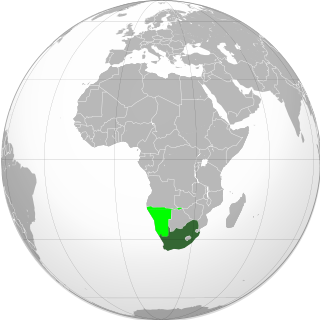
From the 1960s to the 1990s, South Africa pursued research into weapons of mass destruction, including nuclear, biological, and chemical weapons under the apartheid government. Six nuclear weapons were assembled. South African strategy was, if political and military instability in Southern Africa became unmanageable, to conduct a nuclear weapon test in a location such as the Kalahari desert, where an underground testing site had been prepared, to demonstrate its capability and resolve—and thereby highlight the peril of intensified conflict in the region—and then invite a larger power such as the United States to intervene.

The Bhabha Atomic Research Centre (BARC) is India's premier nuclear research facility, headquartered in Trombay, Mumbai, Maharashtra, India. It was founded by Homi Jehangir Bhabha as the Atomic Energy Establishment, Trombay (AEET) in January 1954 as a multidisciplinary research program essential for India's nuclear program. It operates under the Department of Atomic Energy (DAE), which is directly overseen by the Prime Minister of India.

Plutonium-239 is an isotope of plutonium. Plutonium-239 is the primary fissile isotope used for the production of nuclear weapons, although uranium-235 is also used for that purpose. Plutonium-239 is also one of the three main isotopes demonstrated usable as fuel in thermal spectrum nuclear reactors, along with uranium-235 and uranium-233. Plutonium-239 has a half-life of 24,110 years.
The Dhruva reactor is India's largest nuclear research reactor. It was the first nuclear reactor in Asia proper. Located in the Mumbai suburb of Trombay at the Bhabha Atomic Research Centre (BARC), it is India's primary generator of weapons-grade plutonium-bearing spent fuel for its nuclear weapons program. Originally named the R-5, this open pool reactor first went critical on 8 August 1985 after 10 years of construction. However, the unit did not attain full power until 1988. The reactor experienced at least one serious accident when 4 metric tons of heavy water overflowed from the reactor core in 1985 following vibration problems.
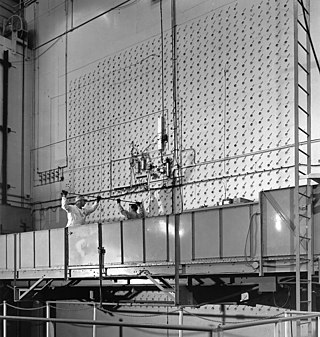
The X-10 Graphite Reactor is a decommissioned nuclear reactor at Oak Ridge National Laboratory in Oak Ridge, Tennessee. Formerly known as the Clinton Pile and X-10 Pile, it was the world's second artificial nuclear reactor, and the first designed and built for continuous operation. It was built during World War II as part of the Manhattan Project.

Weapons-grade nuclear material is any fissionable nuclear material that is pure enough to make a nuclear weapon or has properties that make it particularly suitable for nuclear weapons use. Plutonium and uranium in grades normally used in nuclear weapons are the most common examples.

Australia does not possess weapons of mass destruction, although it has participated in extensive research into nuclear, biological and chemical weapons in the past.
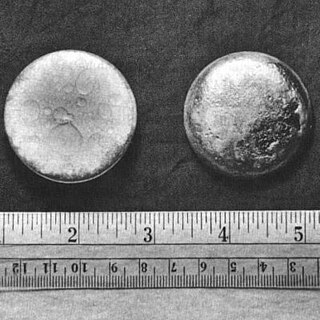
Plutonium is a radioactive chemical element with the symbol Pu and atomic number 94. It is an actinide metal of silvery-gray appearance that tarnishes when exposed to air, and forms a dull coating when oxidized. The element normally exhibits six allotropes and four oxidation states. It reacts with carbon, halogens, nitrogen, silicon, and hydrogen. When exposed to moist air, it forms oxides and hydrides that can expand the sample up to 70% in volume, which in turn flake off as a powder that is pyrophoric. It is radioactive and can accumulate in bones, which makes the handling of plutonium dangerous.

Libya pursued programs to develop or acquire weapons of mass destruction from when Muammar Gaddafi seized control of Libya in 1969 until he announced on 19 December 2003 that Libya would voluntarily eliminate all materials, equipment and programs that could lead to internationally proscribed weapons. This included weapons of mass destruction and long-range ballistic missiles.

Syria and weapons of mass destruction deals with the research, manufacture, stockpiling and alleged use by Syria of weapons of mass destruction, which include chemical and nuclear weapons.

IR-40 also known as Arak Nuclear Complex is an Iranian 40 megawatt (thermal) heavy water reactor near Arak, adjacent to the 1990s era Arak Heavy Water Production Plant. Civil works for the construction began in October 2004. It was initially planned that the reactor would begin nuclear operations in 2014.

Thorium-based nuclear power generation is fueled primarily by the nuclear fission of the isotope uranium-233 produced from the fertile element thorium. A thorium fuel cycle can offer several potential advantages over a uranium fuel cycle—including the much greater abundance of thorium found on Earth, superior physical and nuclear fuel properties, and reduced nuclear waste production. One advantage of thorium fuel is its low weaponization potential; it is difficult to weaponize the uranium-233/232 and plutonium-238 isotopes that are largely consumed in thorium reactors.
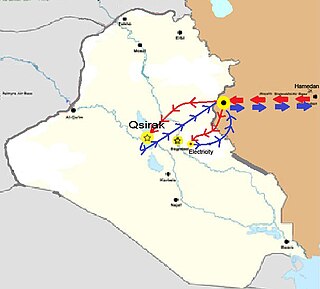
Operation Scorch Sword was a surprise airstrike, carried out by the Islamic Republic of Iran Air Force on 30 September 1980, that damaged an almost-complete nuclear reactor located 17 kilometres southeast of Baghdad, Iraq. The operation took place eight days into the Iran–Iraq War. At dawn on 30 September 1980, four Iranian F-4E Phantom jets refuelled mid-air near the Iran–Iraq border. After crossing into Iraq, the fighters climbed to a high altitude in order to stay undetected by Iraqi airspace radar systems. Moments later, two of the Phantoms peeled off and dropped to a low altitude again to avoid internal radar detection and proceeded to fly stealthily to the Tuwaitha Nuclear Research Centre just southeast of the capital city of Baghdad, and home to the Osirak nuclear reactor.
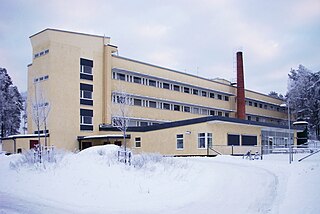
After World War II, Sweden considered building nuclear weapons to defend themselves against an offensive assault from the Soviet Union. From 1945 to 1972 the government ran a clandestine nuclear weapons program under the guise of civilian defense research at the Swedish National Defence Research Institute (FOA).

Switzerland made detailed plans to acquire and test nuclear weapons during the Cold War. Less than two weeks after the nuclear bombings of Hiroshima and Nagasaki, the Swiss government started studying the possibility of building nuclear weapons, and continued its military nuclear program for 43 years until 1988. It has since signed and ratified the Treaty on the Non-Proliferation of Nuclear Weapons. Switzerland never possessed biological weapons, but did have a program of the Swiss Army high command to develop and test chemical weapons.















